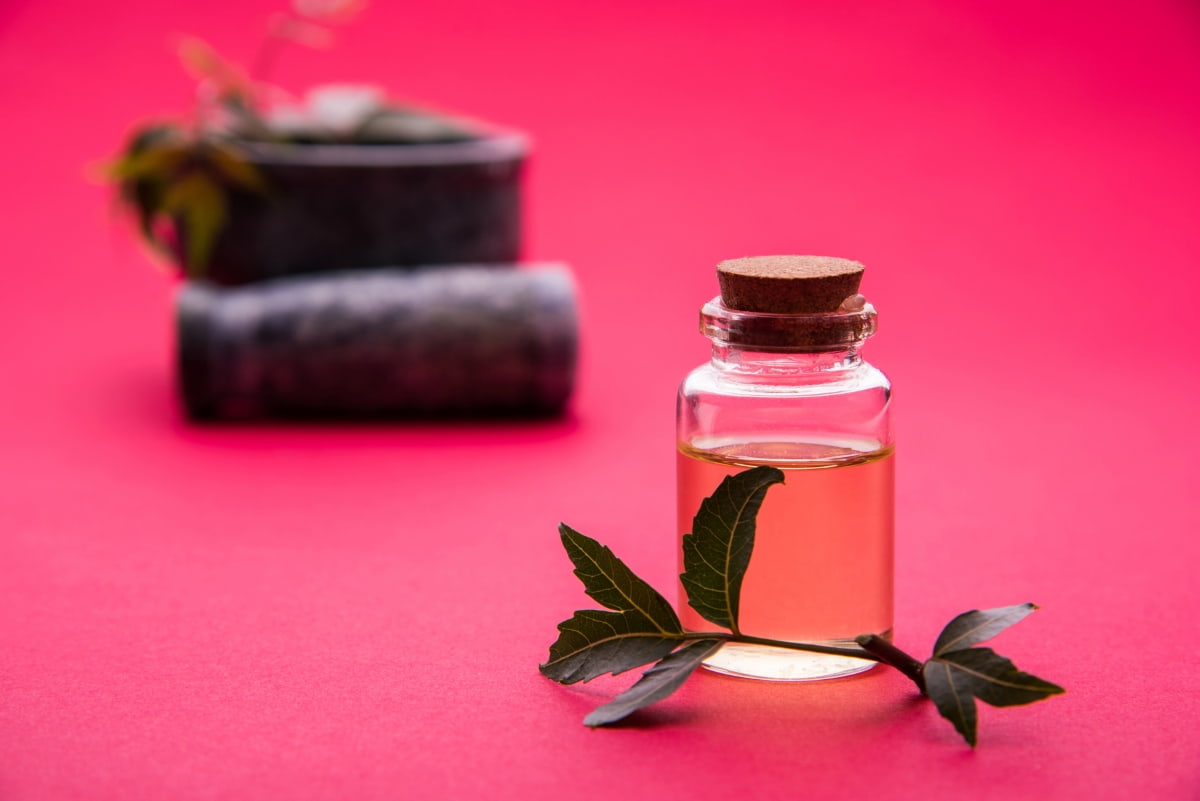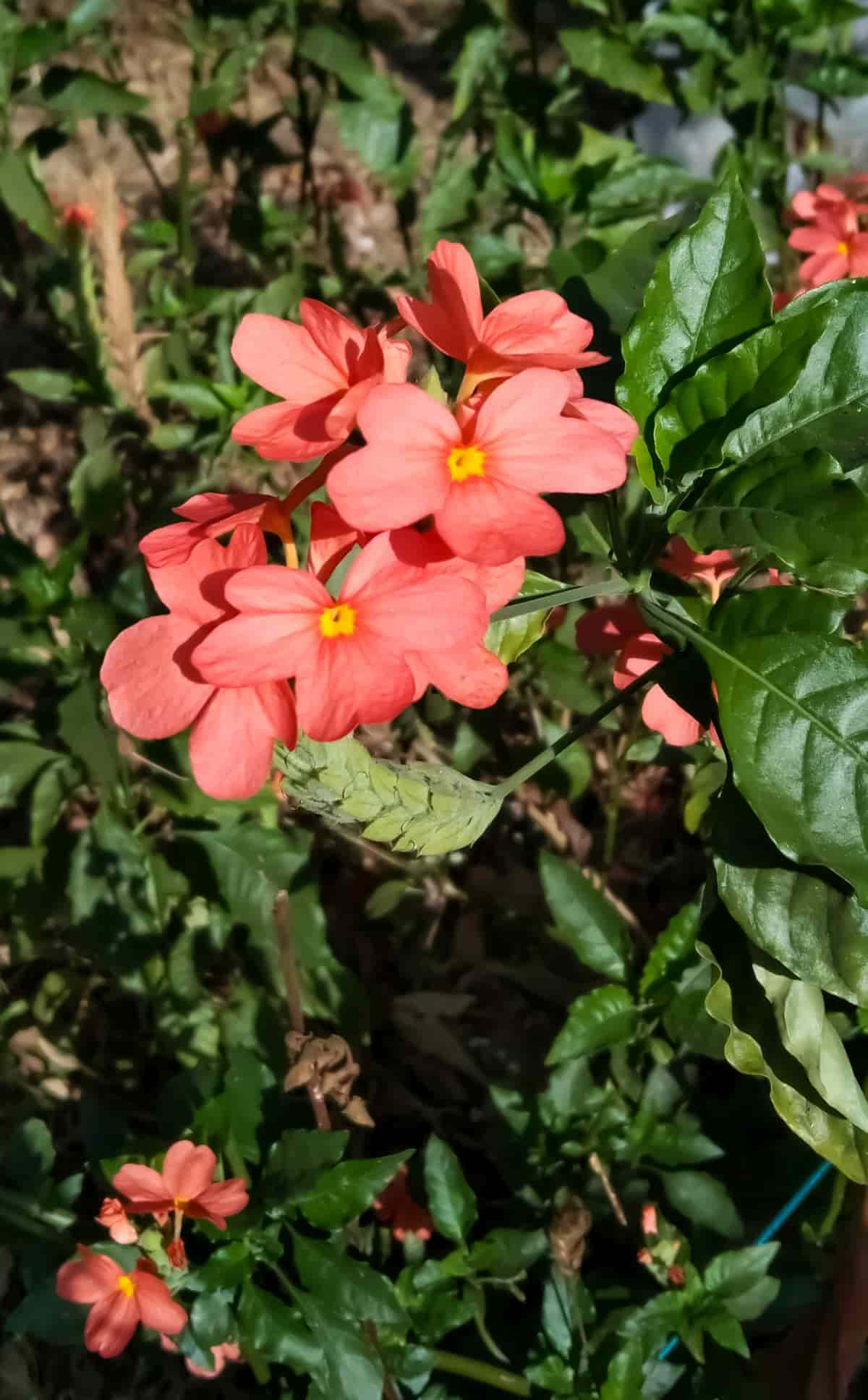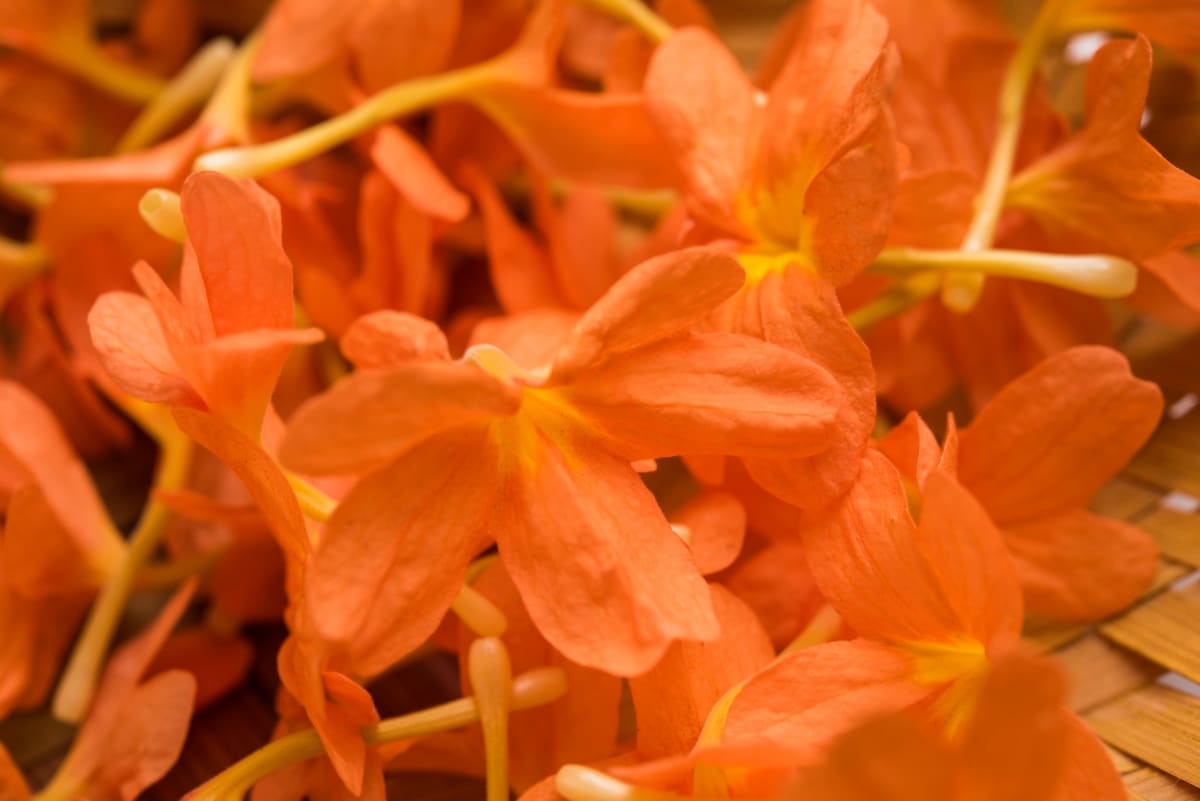Crossandra plants, known for their vibrant flowers and lush foliage, are a popular choice among garden enthusiasts. However, Crossandra’s problems, such as pests and diseases, can hamper their growth. Neem oil, a natural insecticide, offers an effective solution to these issues. This versatile oil not only helps in pest control but also supports healthy plant growth.

Understanding how to deadhead Crossandra plants, choosing the best fertilizer for the Crossandra plants, and dealing with Crossandra plant diseases is crucial for their care. Growing Crossandra from seeds or cuttings, such as the Crossandra watermelon variety, can be rewarding. This article delves into the use of neem oil as a natural method to protect Crossandra plants from pests and diseases.
How to Use Neem Oil on Crossandra Plants
Neem Oil and its Benefits for Crossandra Plants
Neem oil, derived from the seeds of the neem tree, serves as a potent natural insecticide, offering excellent efficacy in managing a wide range of pests and diseases in Crossandra plants. Its mechanism of action involves disrupting the entire insect life cycle, encompassing larvae to adult stages, providing a comprehensive pest control solution. Neem oil also acts as a systemic insecticide, meaning it’s absorbed by the plant and distributed throughout its tissues, providing long-lasting protection against pests.
Additionally, neem oil has fungicidal properties, helping prevent and treat common fungal issues in Crossandra plants. Its organic composition guarantees its environmental safety and harmlessness to beneficial insects, making it a prime option for environmentally conscious gardeners seeking pest control solutions. The benefits of neem oil extend beyond pest control; it also nourishes the plants, promoting healthy growth and enhancing resistance to stress factors like drought and temperature fluctuations.
How to Prepare Neem Oil to Use on Crossandra Plants
Preparing neem oil for use on Crossandra plants involves a simple process of mixing the oil with water and mild soap, which acts as an emulsifier to help the oil blend with water. Begin by filling a spray bottle with water and then add a few drops of mild liquid soap or detergent. Next, add the neem oil to the soapy water.
The typical guideline suggests utilizing approximately two teaspoons of neem oil per quart of water. However, it is crucial to adhere to the precise directions furnished on the neem oil product in use. Following the addition of neem oil, seal the spray bottle and shake it vigorously to achieve uniform dispersion of the oil within the water. This mixture should be used immediately after preparation, as neem oil can break down and lose effectiveness when mixed with water for an extended period.
How to Apply Neem Oil on Crossandra Plants
The best time to apply neem oil is either early in the morning or late in the afternoon to avoid the hot sun, which can cause the oil to burn the plant’s leaves. Using a spray bottle, evenly mist the neem oil solution over the entire plant, ensuring that both the tops and undersides of the leaves are coated, as pests often hide underneath leaves.
It’s important to also spray the stems and any new buds or flowers. Be cautious not to over-apply, as excessive oil can clog the plant’s pores and hinder photosynthesis. Reapply the neem oil every week or after rainfall, as water can wash away the oil, reducing its effectiveness.
Mixing and Dilution for the Right Concentration of Neem Oil for Crossandra Plants
Getting the right concentration of neem oil is crucial for the safety and health of Crossandra plants. Over-concentration can harm the plant, while under-concentration might not be effective against pests. The typical dilution ratio is two teaspoons of neem oil per quart of water, but this can vary depending on the severity of the pest problem and the sensitivity of the plant.
In case you missed it: How to Use Neem Oil on Allium: A Natural Way to Get Rid of Bugs from Allium Plants

It’s important to always start with a lower concentration, especially if you’re treating sensitive plants or young foliage. After mixing the neem oil with water and a mild soap, it’s advisable to test the solution on a small area of the plant and wait 24 hours to check for any adverse reactions.
Can Neem Oil Be Used on All Crossandra Plant Varieties?
It is essential to conduct a patch test prior to the widespread application of neem oil, as different skin types may react differently to its use. Apply a small amount of the neem oil solution to a part of the plant and monitor it for 24-48 hours for any signs of adverse reaction. If there is no negative response, it’s safe to assume that the neem oil can be used on that particular variety. It’s always a good practice to check for specific care instructions for different Crossandra varieties, as their needs might vary slightly.
How Long Does Neem Oil Stay Effective on Crossandra Plants?
Neem oil remains effective on Crossandra plants for about a week under ideal conditions. However, several factors can influence its longevity, such as rain, which can wash off the oil, and high temperatures, which can cause it to evaporate more quickly. For continuous protection, it’s recommended to reapply neem oil every week or after any significant rainfall. Regular application ensures that any new pests that arrive after the initial treatment are also dealt with, keeping the Crossandra plants healthy and pest-free.
Using Neem Oil in Combination with Other Pest Control Methods
While neem oil is an effective standalone treatment for many pests and diseases, combining it with other pest control methods can enhance its effectiveness. For example, integrating neem oil application with the practice of deadheading Crossandra plants can improve plant health and reduce pest attraction. Deadheading, which involves the removal of faded flowers, promotes fresh growth and minimizes the risk of pest infestations.
In case you missed it: How to Use Neem Oil on Hellebore: A Natural Way to Get Rid of Bugs from Hellebore Plants

Additionally, choosing the best fertilizer for Crossandra plants and ensuring proper watering and lighting conditions can strengthen the plants, making them less susceptible to pests and diseases. However, when using multiple pest control methods, it’s important to be cautious about potential interactions between different products and to always follow the instructions for each product.
Some Common Pests and Diseases that Neem Oil Can Control on Crossandra Plants
Neem oil can control pests like aphids, spider mites, and mealybugs, which are known to feed on Crossandra leaves and stems. Neem oil also helps prevent fungal diseases such as powdery mildew and root rot, which are common issues in Crossandra plants, especially when overwatered or in poor drainage conditions.
Neem oil offers a holistic solution for preserving the health and appearance of Crossandra plants by interrupting pests’ life cycles and impeding fungal growth. Regular application of neem oil, combined with good cultural practices like proper fertilization, watering, and deadheading, can significantly reduce the incidence of these pests and diseases.
How to Monitor the Effectiveness of Neem Oil on Crossandra Plants
Monitoring the effectiveness of neem oil on Crossandra plants involves regular observation before and after application. Start by noting the severity of pest infestation or disease symptoms on the plant. After applying neem oil, check the plant every few days to observe any changes in the health of the foliage, the presence of new pests, or the reduction of existing pests. Look for signs of improvement, such as fewer pests, lessened damage to leaves, and new growth. It’s also important to monitor the plant for any adverse reactions to the neem oil, like leaf burn or wilting.
Safety Precautions to Take when Using Neem Oil on Crossandra Plants
When using neem oil on Crossandra plants, it’s important to take certain safety precautions to ensure both your safety and the health of the plant. Apply neem oil during cooler parts of the day, such as early morning or late afternoon, to prevent leaf burn. Be cautious not to over-apply, as this can harm the plant. Keep pets and children away from the treated area until the neem oil has dried completely. Store neem oil and its mixture out of reach of children and pets.
In case you missed it: How to Use Neem Oil on Columbine Plants: A Natural Way to Get Rid of Bugs from Columbine Plants

Conclusion
With careful application and adherence to safety measures, gardeners can successfully protect their Crossandra plants from common pests and diseases, ensuring their lush and colorful growth.
- Feed Your Flock for Less: Top 10 Tips to Save on Chicken Feed
- Ultimate Guide to Ossabaw Island Hog: Breeding, Raising, Diet, and Care
- Hatching Answers: The Top 10 Reasons Your Chickens Aren’t Laying Eggs
- Eggs and Economics: Breaking Down the Cost of Raising Backyard Chickens
- Defend Your Greens: Proven Methods to Keep Iguanas Out of Your Garden
- Ultimate Guide to Cinnamon Queen Chicken: A Comprehensive Guide for Beginners
- Ultimate Guide to California Tan Chicken: Breeding, Raising, Diet, Egg-Production and Care
- Ultimate Guide to Marsh Daisy Chicken: Breeding, Raising, Diet, and Care
- 10 Types of Chicken Farming Businesses You Can Start for Profits